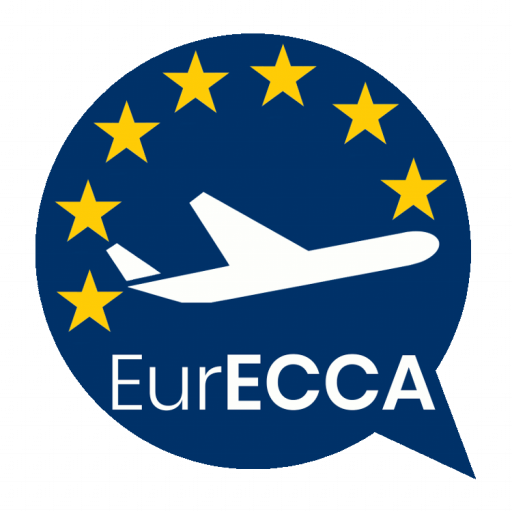In 2011 there is a new regulation on medical fitness as applicable to the Crew Members of civil aviation:
- EU Regulation n ° 1178/2011 of November 3rd, 2011.
In this regulation is treated only medical fitness if you are pregnant Personnel Technical Flight Female (Flight Crew), which is also put at risk by the activity of flight:
- MED.B.045 Obstetrics and Gynecology letter c) point 1)
“In the case of pregnancy, where Ae MC or AME believe that the owner is likely to carry out his duties, the Technical Staff Female (Flight Crew) is eligible pregnant during the first 26 weeks of gestation.”
In this rule there is no specificity regarding the pregnancy at risk of Flight Staff of Female Cabin (Cabin Crew).
Only an annex of the Executive Director of EASA refers to this subject:
- AMC9 MED.C.025 Obstetrics and Gynecology letter b), number 1), of the Annex to the decision of the Executive Director 2011/015 / R:
“If you are pregnant, the staff cabin female (Cabin Crew) is considered suitable only during the first 16 weeks of gestation.”
EurECCA would like to draw the attention to the fact that the Community Rules must take into account of “scientific evidence” and “best practices of aviation medicine,” as mentioned in the Regulations concerning the physical fitness of flight activity, specified in :
- paragraph 2, letter b) of Article 19 of Regulation (EC) No. 216/2008 of February 20th, 2008;
- considering (2) of Regulation (EU) No. 83 / 2014 of January 29th, 2014;
- paragraph 2 letter a) Article 22 of Regulation (EC) No. 216/2008 of February 20th, 2008.
In paragraphs above, it refers to “scientific evidence” and “best practices”; the difficulty lies in understanding which scientific evidence and best practices will enable the Cabin Crew to practice flying until the sixteenth week of pregnancy. EurECCA points the fact how the two elements mentioned are connected as the best practices are seen as the application of the most advanced scientific models.
For Cabin Crew to perform their duties during flight operations, it is appropriate to remind that flight activity provides:
- Normal Conditions,
- Abnormal Conditions,
- Emergency Situations,
Even under Normal Conditions is expected a remarkable psychological commitment, due to the presence of stress factors related to work organization, often completed by using the minimum number of Cabin Crew required to perform the emergency duties and which would be including the pregnant Cabin Crew Female.
Therefore, it is necessary to take into account all the other elements that influence the work of Cabin Crew, which highlighted biological, chemical, physical, operational and psychosocial.
These stressors can be combined in the following elements:
| BIOLOGICAL |
|
| CHEMICAL |
|
| PHYSICAL |
|
| OPERATIONAL |
|
| PSYCHOSOCIAL |
|
Normal Conditions seem to put more than one question on the failure to provide “explicit” in EU Regulations of flight activity limitations, in terms of:
- FDP (Flight Duty Period);
- Minimum rests;
- Cabin altitude;
- Altitude flight;
- Limits for exposure to ionizing radiation;
- Not included in the number of Cabin Crew enabled to perform the tasks of emergency for the aircraft Cabin Crew pregnant.
The only exception, expressly provided for, is that this staff does not operate as a “single cabin crew” (AMC obstetrics and gynecology MED.C.025 °)
Conditions in Abnormal and Emergency Situations are provided a large number of actions that the Cabin Crew to perform. These actions include, to name a few cases stated:
- Management of turbulence media/severe;
- Management of unruly passenger in-flight;
- Fire fighting duties
- The management of accidents involving the transport of dangerous goods;
- First aid duties including cardio pulmonary resuscitation within the BLS;
- Actions to be taken in case of cabin decompression and the restrictions of the use of oxygen for Cabin Crew;
- The management of aircraft evacuation, for example in case of ditching and in other situations provided,placing the most urgent questions about the employement of pregnant Cabin Crew.
For EurECCA, Normal Conditions, Abnormal Conditions and Emergency Situations pose a significant risk for the pregnancy and reduce its sustainability.
Reminding that the “best practices”, defined in the best tradition of science (is attached at the bottom of a bibliography minimum check the concept of “best practices”, outdated, so we refer to the “best practices” with the intent to not make absolute the concept itself, but tie it to change over time of the scientific models of reference) include theoretical paradigms commonly shared by the scientific community, which refer to:
- Theoretical and scientific evidence;
- Ethical foundations;
- Collaborative approach;
- Responsiveness to the needs of the recipients;
- Availability of resources;
- Efficiency and sustainability.
With regard to ethical and theoretical foundations, it is recalled that the objectives of the Millennium Development Goals (MDGs: Millennium Development Goals) established by the United Nations for 2015, include eight points. Three of these are dedicated to women’s health:
- Step 3 – promote the empowerment of women;
- Step 4 – reduce child mortality;
- Step 5 – improve maternal health.
The paper “Europe 2020” is a staple of health for sustainable economic growth and equal opportunities.
As part of the Charter, the document “Health 2020” specification, inside of the main points, that of maternal health.
One wonders whether there are, as suggested by the “best practices”, efficacy evaluations regarding decisions about the health of pregnant Cabin Crew and their fetus engaged in flight in order to keep its commitments towards the “Maternal” in the Documents of the United Nations and the European Commission.
Seems to miss a collaborative approach, at least at the level of the recipients of the measure, whose health takes on a central to health policies at the highest level of organizations of the United Nations and the European Community.
EurECCA REQUIRES:
- A pegnant cabin Crew must be declared unfit to fly since the first day of the evidence of pregnancy;
- To examine the “scientific evidence” under which were established by the Community regulations, the limits for flight activity for pregnant Cabin Crew (16 weeks before suspending duty).
EurECCA is convinced of the importance to revise the European Regulations for flight activity of pregnant Cabin Crew
Bibliography “best practices” in medicine:
Antonosvsky A., The salutogenic model as a theory to guide health promotion (1996).
Armstrong e altri, Knowledge translation strategies for facilitating evidence-informed public health decision making among managers and policy-makers (The Cochrane Library 2011, Issue 6).
Broesskamp-Stone, Best Practice. A normative framework or optimal health promotion and desease prevention. Health promotion Switzerland (2006).
European Commission, DGVIII, Evaluation Unit Project Cycle Management: Integrated approach and Logical Framework-1193.
European Commission, Europe Aid Cooperation Office Affairs Evaluation – Project Cycle Management Handbook (March 2002) Version 2.0.
Fertman, C. L. , Allensworth, D.D., Health promotion programs. From theory to practice. (2010).
Noack H., 20th birthday of Ottawa Charter: processes, progress, illusions. Key note presentation at the 7th IUHPE European Conference on health Promotion (2006).
World Health Organization Ottawa charter for health promotion: an international conference on health promotion the move towards a new public health (WHO 1986).
World Health Organization, WHO Regional Office for EuropeGood practice appraisal tool for obesity prevention programs, projects, initiatives and interventions (2011).
The interactive Domain Model of best practice in health promotion and public health, Kahan e Goodstadt (2005).

